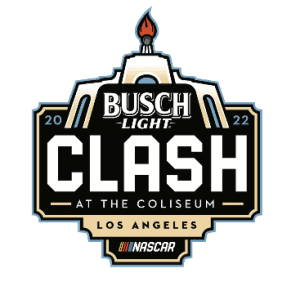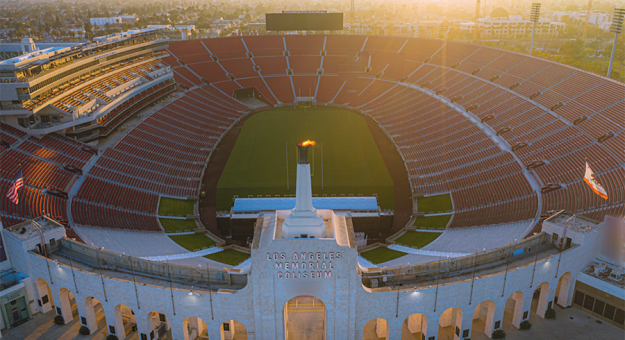A chapter in NASCAR history ended 51 years ago.
On Aug. 6, 1971, Bobby Allison claimed the 29th and final checkered flag in a Cup Series race at Bowman Gray Stadium, a quarter-mile track in Winston-Salem, N.C.
NASCAR’s “Modern Era” began the next year. With cigarette maker Winston coming aboard as a series sponsor, the sport was getting too big for quarter-mile tracks that doubled as football stadiums.
Located in the city where Winston was headquartered, Bowman Gray ironically got the axe.
Around this time, Joe Gibbs was in the early stages of his career as a football coach. Long before he was a Super Bowl winner and NFL Hall of Famer, Gibbs spent two years — 1969 and 1970 — as an assistant coach at the University of Southern California.
Gibbs experienced Trojan home games at the L.A. Coliseum, a 58,000-seat stadium that opened in 1923. Not very many NASCAR team owners can say they’ve taken part in sporting events at the Coliseum.

“I know what it’s like to be in that stadium,” Gibbs said. “It’s a classic, unreal experience.”
Why does any of this matter? It matters because of what will happen on Feb. 6: The inaugural Busch Light Clash at the Coliseum.
For the first time since 1971, NASCAR will run a Cup Series race on a quarter-mile track. Instead of racing at BGS, NASCAR will compete on a clone of it, a temporary track constructed in the bowl of the Coliseum.
“I just think it’s a huge deal for our sport,” Gibbs said. “I appreciate NASCAR being that creative. This is something where it took guts to make this decision and I applaud them for doing that.”
How exactly is this exhibition event coming together?
‘Kernel of an Idea’
Patrick Rogers got a heads-up about leading the Clash project in late July.
A former PR official at Roush Fenway Keselowski Racing, Rogers has been in the NASCAR fold since 2010.
The heads-up in question came from Steve O’Donnell, chief racing development officer.
“I had called Steve O’Donnell about something completely unrelated,” Rogers told SPEED SPORT. “By the end of our conversation, he’s like, ‘Hey, wanted you to know, we kind of threw your name in the hat as a potential candidate to run this thing. But don’t tell anybody I told you that.’”
Soon, there was a call from Pete Jung, NASCAR’s chief marketing officer, to ask him if he was interested (the answer was yes). Finally, Rogers got a call from Ben Kennedy, NASCAR’s VP of strategy and innovation, with the offer.
“The Coliseum project is really a kernel of an idea that Ben had, really brought it to fruition and getting buy-in with the board and throughout the company and working with the Coliseum,” Rogers said. “So they had done a lot of the back-end work already. Essentially, for me, it was to kind of pick up the ball and run with it.”
In the few months he had been working on the project, Rogers had “been drinking from a firehose a little bit … putting all this together in a relatively short amount of time.”
That included finalizing the format, made up of heat races, a 150-lap main event and concerts during downtime between them.
Rogers and his team are responsible for everything inside the bowl. The Coliseum will control aspects outside of the bowl, like ticket takers, “a lot of those things that for a (NASCAR) owned and operated property we might have to do.”
Of course, NASCAR is responsible for making the temporary quarter-mile track a reality.
The man in charge of the project is Derek Muldowney. NASCAR’s VP of design and development, Muldowney’s been part of almost every major track build or renovation of NASCAR-owned tracks since 2000.
“This is an unusual one, obviously,” Muldowney told SPEED SPORT. “We haven’t done a temporary track like this ever. This is quite exciting, quite a challenge. … It’s not a massive project for us, compared to other race tracks we built. The challenge is really the time to build it in.”
When NASCAR took over “ownership” of the stadium on Dec. 20, 48 days before the Clash’s scheduled date, Muldowney’s crew, made up of a core group of 20 to 30 people, went to work.
Their first step was in protecting the Trojan’s football field, putting fabric and plywood down. Then came the filler material.
Click below to continue reading.
